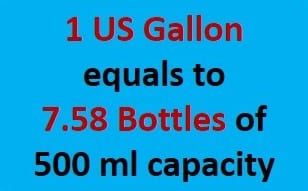A condensation reaction in organic chemistry combines two molecules to form a single molecule, typically with the loss of a small molecule like water. It’s not a dehydration reaction. Another name for a condensation reaction is dehydration synthesis.
These reactions are referred to as synthesis reactions because they result in the formation of a new compound with a broad structure. Keep reading to know more about examples of condensation reactions and their difference from dehydration.

Table of Contents
Condensation Reaction Definitions
- Condensation refers to a reaction that involves the joining of two molecules with the loss of water.
- It is the process of removing heat from a system in such a way that vapors become liquid.
Small droplets of water on the surface of the cold bottle are an example.
Examples
Condensation of Amino Acids
Amino acids are important biological molecules.
They have an amine functional group on one end and a carboxylic acid functional group on the other.
In a condensation reaction between two amino acids water is extracted.
In addition, a covalent bond forms between the amine nitrogen of one amino acid and the carboxyl carbon of the second amino acid.
Polymerization reactions
In Polymerization reactions, monomer units condense to form polymers.
The formation of lipids with one glycerol and three molecules of fatty acids is an example.
Polymerization (American English) or polymerisation (British English) is a chemical reaction that joins monomer molecules to produce polymer chains or three-dimensional networks in polymer science.
Dehydration Synthesis
The removed hydrogen and hydroxide in a condensation reaction come from separate molecules, while the removed H and OH in a dehydration reaction comes from the same molecule.
Another name for a condensation reaction is dehydration synthesis.
Key Terms
- The condensation reaction is a dehydration reaction in which the small molecule that is removed is water.
That’s why another name for condensation reaction is dehydration synthesis. - The joining of two similar molecules is called a self-condensation reaction.
- The turning of gas into liquid is also called condensation.
- Another name for a conversation creation is dehydration synthesis.
Related Links
Sublimation Examples
C6H12O6 (Glucose)
Specific Heat Formula
Dehydration
Dehydration Reaction
A dehydration reaction occurs when two chemicals react chemically, with one of the results being water. For example, two monomers may react to generate a dimer and a water molecule when a hydrogen (H) from one monomer links to a hydroxyl group (OH) from the other monomer (H2O).
Concentrated phosphoric acid, concentrated sulfuric acid, hot ceramic, and hot aluminum oxide are all typical dehydration agents.
Frequently Asked Questions (FAQs)
1. What is another name for condensation reaction?
Another name for a condensation reaction is dehydration synthesis.
In organic chemistry, a condensation process combines two molecules to form a single molecule, usually with the loss of a minor component such as water. It isn’t a dehydrating process.
Because they result in the development of a new molecule with a wide structure, these reactions are referred to as synthesis reactions.
2. How condensation reaction is different from dehydration?
Two molecules unite to produce a single molecule with the loss of a tiny molecule in the condensation reaction; in the dehydration reaction, this lost molecule is water.
More Links
- BCl3 Lewis Structure in four simple steps - November 1, 2023
- PH3 Lewis Structure in four simple steps - October 8, 2023
- PF3 Lewis structure in four simple steps - September 24, 2023



